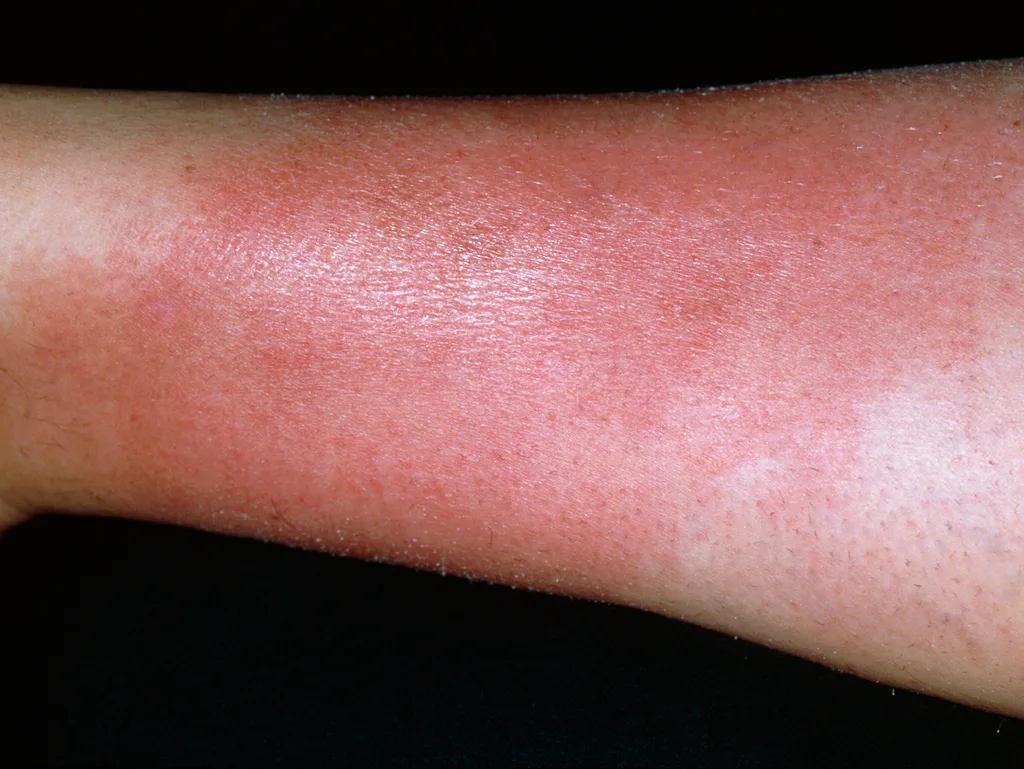A nurse for more than 30 years, Mary* has seen her fair share of skin infections. So when a sore, swollen, red area developed on her left breast, the 54-year-old Sydneysider immediately assumed it was an abscess.
“I actually thought it was an infected breast cyst, so I waited to see if it would go away on its own,” Mary recalls.
When the pain didn’t settle down after a few days, she saw her GP, who diagnosed it as cellulitis. Nurse practitioner in wound management Louise Webber says cellulitis is frequently considered a condition of old age, but it’s actually commonplace.
“It’s a bacterial skin infection that can affect anyone at any age, and is one of the most common reasons why people go to the emergency department,” she says.
Although cellulitis can be effectively treated with medication, Louise says early diagnosis and prompt treatment are paramount to a speedy recovery.
What is cellulitis?
Not to be confused with cellulite, cellulitis is usually caused by bacteria. It can appear anywhere on the body but frequently affects the arms and lower legs.
“It occurs when harmful germs enter your body through skin tears, cuts and trauma, such as knocking your leg on a car door,” says Louise.
While it’s not contagious, cellulitis can spread quickly and may lead to blood poisoning (sepsis), which is why it needs to be treated as soon as possible.
She adds, “People with severe cellulitis often need to be treated in hospital with a course of intravenous antibiotics.”
What causes cellulitis?
Cellulitis can be caused by bacteria entering the skin via insect bites, abrasions and cuts, chronic leg wounds, fungal or viral infections and skin conditions such as eczema and psoriasis.
“Being overweight increases your chances of developing cellulitis and having recurring episodes. Other contributing factors include whether you’ve got weakened immunity due to diabetes, liver disease or kidney failure, and if you’ve had cellulitis before,” Louise explains.
The risk is even higher if you have lymphoedema – a chronic condition that causes swelling and skin breakage as a result of damaged lymph vessels, or oedema – where fluid gets trapped and builds up in your limbs. Both conditions can delay wound healing and reduce the efficacy of antibiotics.
Signs and symptoms of cellulitis
While symptoms vary from person to person, the first signs of infection include a red rash which may be accompanied by swelling, tightness and tenderness, feeling feverish and shivery, with a loss of appetite – which was definitely the case for Mary.
“The rash typically has a distinct border and it generally affects one side of the body. And there’s often an entry site, such as a cracked heel, ulcer or bite,” Louise says.
Sometimes blisters develop, which may leak fluid. You may also experience fevers, sweats and vomiting.

An example of what cellulitis looks like close up.
When to see the doctor for cellulitis
Cellulitis can turn nasty quickly so see your doctor if any area of your skin suddenly becomes red, painful and hot, or discharges yellow fluid or pus.
“Your GP is the first port of call before trying your local hospital. But if you can’t see your doctor on the same day, go to your nearest emergency department,” Louise advises. “With prompt treatment, most people make a full recovery without any complications.”
On arrival, your doctor may take a wound swab, blood test or order an X-ray to determine the exact cause of your infection. Mary’s doctor ordered an ultrasound, and her cellulitis was ultimately diagnosed when it was determined that no abscess had formed.
Treatment options for cellulitis
Most cases of cellulitis can be treated with a course of antibiotics, and symptoms often resolve themselves within a few days.
“Tablets are the first choice for treatment, but if it’s severe, antibiotics are given directly into the vein to prevent the spread of infection,” Louise says. This can be done in hospital or at home by a doctor or nurse.
“Many people manage their infection at home, but for those with severe cellulitis, sepsis, or underlying illness, hospitalisation is recommended.”
Fortunately for Mary, her cellulitis responded well to a course of tablets. “I think I just caught it in time and within two weeks the infection had gone,” she recalls.
If you’re concerned a skin rash could be cellulitis, Louise says it’s essential to act quickly before it develops into a major problem.
“If you don’t nip cellulitis in the bud, it can lead to a serious infection of the lymph nodes called lymphangitis,” she says.
Lymph nodes normally help to destroy and remove bacteria, so if there’s an infection, it may decrease their ability to protect your body.
TIPS TO PREVENT INFECTION
1. Keep skin healthy
Clean, supple skin can prevent cellulitis from taking hold. “If your skin’s dry, moisturise it regularly and drink plenty of fluids,” Louise says. Other ways to keep your skin intact include wearing socks
to protect your feet, and trimming toenails to avoid cuts and scratches.
2. Clean wounds carefully
When dealing with cuts and abrasions, reduce the risk of infection by washing your hands thoroughly, using antiseptic, and keeping the wound covered at all times. “It’s about minimising the risk of skin damage,” she says.
3. Elevate your legs
People with lymphoedema and oedema are at greater risk of cellulitis and skin infections. “When treating either, the principles remain the same – to reduce excess fluid and help circulation,” Louise says. Elevating the affected area can help with drainage and reduce swelling.
4. Boost your immunity
It’s crucial to strengthen your immune system. “Maintain a healthy lifestyle by eating a balanced diet, exercising regularly and staying hydrated.”


